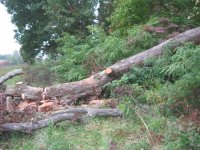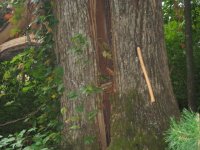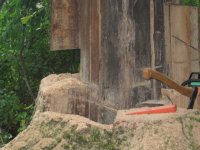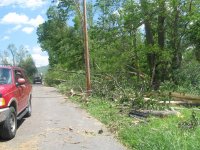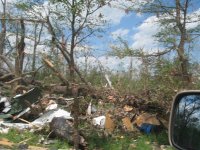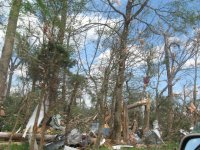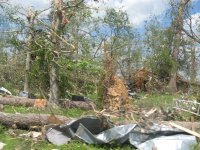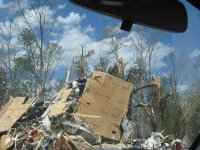Unfortunately, I have never had direct training. Fortunately, I have survived.
I think that that is quite common. Many people either have no formal training, or are taught by a family member or friend who learned by personal experience. I don't want that to sound like I am challenging anyone's knowledge, experience, skills, or abilities. When I was 16, I was handed a chainsaw and shown how to start it. That's it. It wasn't until many years later that I started looking for training and instruction in classes, videos, books, by asking questions, etc. I learned that in many cases, I may not have gotten hurt because I was 'lucky' and not because I was 'safe'.
I have learned a lot from postings on sites like these, and from 'what not to do' videos on-line. I still have a lot learn, and hope to continue to learn.
Some people are taught by co-workers who may be good at what they do, but may or may not be good instructors. Some people experiment and learn from a series of 'near misses' - at least the survivors do. In fact, one of my favorite definitions of experience:
"Experience is a series of non-fatal accidents"
So, if we can learn from others' experiences, good and bad, we can increase the likelihood of survival, as well as increase efficiency, and share '
best practices' (if that term does not make you gag from over use).
Let me hasten to add, only in a life or death circumstance will I ever work another tornado with untrained workers or without a complete plan and someone in charge.
So how might you train some of those workers if the local Sheriff or Emergency Manager put you in charge? Would you want some time in a classroom first? Are there key things you would point out, even if the workers swear that they '
know how to run a saw'? You mentioned having a work plan earlier, which I like.
When we do the '
field portion' of our training I have students demonstrate whatever we talked about in small groups, and have them verbalize what they are doing; "
I am visually checking the saw over for loose or missing pieces. I am checking chain tension. I am verifying that the chain brake works. etc." In addition to 'practice cuts', I try to intentionally set up some safe failures, such as saw binds, so that they can see how they happen, why/when to use wedges, and how to recover, etc. I have them cut with a dull chain and a sharp chain, so they can feel the difference. Again, this assumes that they are new chainsaw users.
Then we try to pair up newer students with more experience sawyers for coaching. I will also try to verbalize what I am doing: "
I think that the trunk is resting on this limb, and is likely to go this way if I cut this branch off. I am going to make a relief cut here, then finish from the top. I am concerned about a pinch here. I am cutting here, but keeping an eye on this part of the tree for movement", etc.
Training for storm damage in my opinion is different than chainsaw training in general. It usually needs to be truncated but still hit on all the important points.
Yeah. There is debris, and there are tensions, tangles, and stresses you don't normally find in firewood cutting, like some of WOODS photos show. That's why I like to emphasize that there are different parts to training: safety; how to start/operate/maintain the saw; using the saw; tree hazards; site/crew supervision; etc. The last can be very important when you have a team or crew that does not always work together, and may have different work habits, approaches, perceptions of risk, etc. It can be frustrating, but important, when the most experienced sawyer is not cutting, but supervising the site and the work performed by others.
Philbert







